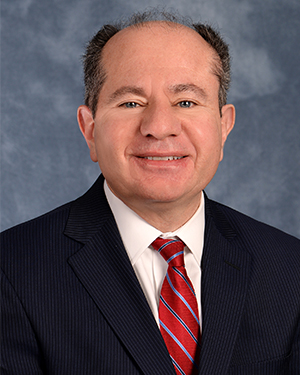|
May – June 2019
A message from Atheer Kaddis, vice president, Pharmacy Services
Blue Cross tackling cost of prescription drugs
 Drug costs continue to rise — one of the many challenges we face in trying to keep health care costs affordable. One in four people taking prescription drugs reports difficulty affording his or her medication and doesn’t take the medications as prescribed. Drug costs continue to rise — one of the many challenges we face in trying to keep health care costs affordable. One in four people taking prescription drugs reports difficulty affording his or her medication and doesn’t take the medications as prescribed.
The U.S. yearly spending amount per member for most of the top five therapy classes (diabetes excluded) is driven primarily by specialty drugs. Among the most commonly used specialty drugs, prices for branded drugs have risen by 57% since 2014, while prices for generic drugs dropped by 35%. Retail drugs overall (including specialty drugs) accounted for 21% of employer health benefits in 2017.*
Here are some ways that Blue Cross Blue Shield of Michigan and Blue Care Network are working to control drug costs:
- Monitoring emerging therapies and developing medical policy that addresses them. The prescription drug development pipeline is robust, and there are currently more than 1,600 medications in late-stage clinical development. Some of these medications are gene-based therapies that may cost more than $1 million per patient. Blue Cross is closely tracking these medications and developing coverage policies, management strategies and payment strategies before these medications become commercially available. Our goal isn’t to limit access to these medications but to ensure that the medications are prescribed according to labeling approved by the U.S. Food and Drug Administration to benefit patients who need them most.
- Maximizing a low net cost approach. Currently, Blue Cross negotiates rebates and discounts with manufacturers by placing drugs on a preferred formulary list and managing utilization of specific drugs.
- Working with our pharmacy benefit manager, Express Scripts, and our preferred specialty pharmacy, AllianceRx Walgreens Prime, to achieve top-tier pricing and secure best-in-class discounts.
- Supporting our Value Partnerships programs. Working with physician organizations to identify specific ways to reduce overall drug costs while maintaining access to needed medication treatment and quality care.
- Coordinating efforts with our care management programs and behavioral health initiatives. We’re working to more effectively coordinate pharmacy, care management and behavioral health interventions to enhance the continuum of care for our members.
We take aggressive, appropriate action to eliminate any unnecessary spending when less expensive, clinically equivalent options are available. So, when a pharmaceutical company announces price increases — or releases a new high-priced drug — we already have processes in place to evaluate our drug offerings and provide our members with access to the most cost-effective drug therapy.
Expensive drugs can negatively affect members in several ways, including:
- Potentially higher out-of-pocket costs
- A member’s reluctance to begin therapy
- Decreased adherence to a prescribed regimen
Also, in extreme cases, an expensive drug might not be covered. If that’s the case, members will have access to alternate medications.
Ideally, none of these things would happen, but if they did, Blue Cross would alert members ahead of time to allow them to discuss alternative treatment options with you.
Blue Cross puts such processes in place so that members are informed when lower-cost options are available that work just as well as high-cost drugs. Controlling drug spending this way helps keep premiums at a reasonable level.
What can you do help ensure your patients can afford their medications? Here are two ideas:
- Encourage your patients to download our Blue Cross app to see what drugs are covered and find less expensive alternatives so they can discuss their options with you.
- Perform a real time benefit check to see what’s covered so you can share that information with patients. You can use electronic prescribing and electronic health records for prescribing and obtaining prescription drug pricing information in real time. Ask your e-prescribing software provider if this is available to you.
Making prescription drugs more affordable has never been more important — and we’ve never had more solutions available to help make medicines more affordable and accessible. Our efforts can lead to better clinical outcomes, the ultimate measure of the work we do.
*Source: Kaiser Foundation analysis of data from the Centers for Medicare & Medicaid Services and Truven Health Analytics
|


 Drug costs continue to rise — one of the many challenges we face in trying to keep health care costs affordable. One in four people taking prescription drugs reports difficulty affording his or her medication and doesn’t take the medications as prescribed.
Drug costs continue to rise — one of the many challenges we face in trying to keep health care costs affordable. One in four people taking prescription drugs reports difficulty affording his or her medication and doesn’t take the medications as prescribed.